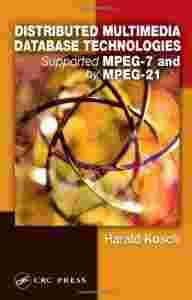A multimedia system needs a mechanism to communicate with its environment, the Internet, clients, and applications. MPEG-7 provides a standard metadata format for global communication, but lacks the framework to let the various players in a system interact. MPEG-21 closes this gap by establishing an infrastructure for a distributed multimedia framework, allowing for the creation, modification, viewing, and communication of digital items among all participants within an MPEG-21 agreement.
Now you have a guide that examines the structure and potential usage of these emerging standards. Distributed Multimedia Database Technologies Supported by MPEG-7 and MPEG-21 describesthe technologies, concepts, and tools of distributed, content-based multimedia systems. It focuses on the practical uses of the technologies of MPEG and SQL/MM in these components, and on the interoperability among them (for data exchange, transactions, interaction, etc.). This book demonstrates an open distributed multimedia framework that enables these components to cooperate in a working environment, delivering rich multimedia access in an increasingly mobile world.
About the Author
Harald Kosch is an associate professor at the University of Klagenfurt. His domains of interest are distributed multimedia systems, multimedia databases, middleware, and Internet applications. He started research at the École Normale Supèrieure in 1993 during postgraduate study and entered the Ph.D. program in 1994, obtaining his Ph.D. degree in June 1997. He actively participates in the Moving Picture Experts Group (MPEG)-7 and MPEG-21 standardization and is involved in several international research projects in the domain of distributed multimedia systems.

